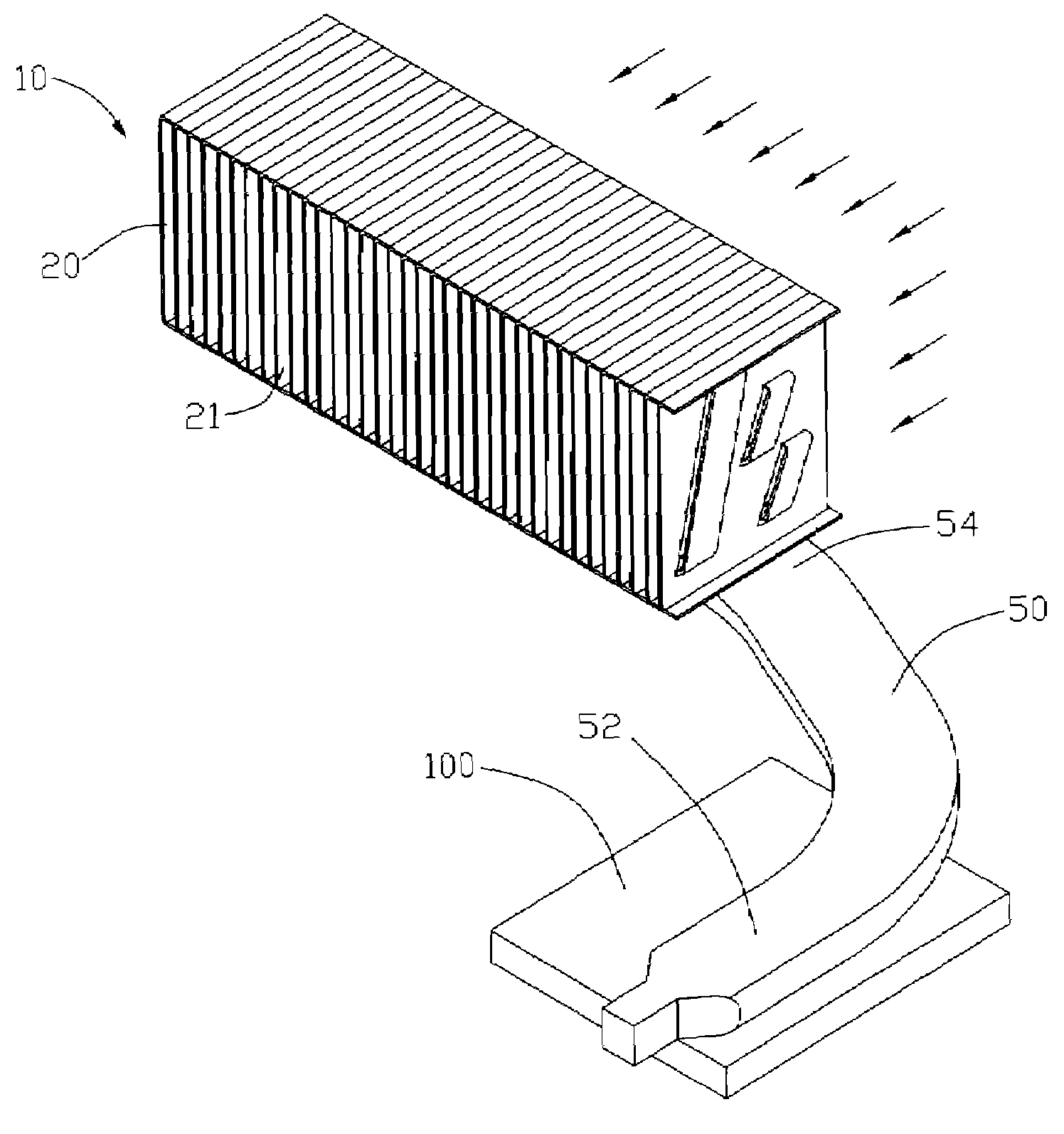Heat sink
- Summary
- Abstract
- Description
- Claims
- Application Information
AI Technical Summary
Benefits of technology
Problems solved by technology
Method used
Image
Examples
Embodiment Construction
[0020]Referring to FIG. 1, a heat sink includes a fin unit 10, a heat pipe 50 being thermally attached a heat-generating electronic device, for example, a CPU 100 (central processing unit), to absorb heat therefrom and transfer the heat to the fin unit 10, and a cooling fan (not shown) arranged at a side of the fin unit 10 for generating airflow over the fin unit 10 as indicated by arrows.
[0021]Referring to FIGS. 2-3, the fin unit 10 comprises a plurality of stacked fins 20 parallel to each other. A flow channel 21 is formed between each two neighboring fins 20 to channel the airflow. Each fin 20 has a square-shaped main body 22 which includes top and bottom edges 32, 34 extending along the latitudinal direction as the flowing direction of the airflow, and left and right edges 38, 36 extending along the longitudinal direction. Top and bottom hems 24, 25 bend from the top and bottom edges 32, 34 of the main body 22, respectively. Distal edges of the hems 24, 25 of each fin 20 contact...
PUM
 Login to View More
Login to View More Abstract
Description
Claims
Application Information
 Login to View More
Login to View More - R&D
- Intellectual Property
- Life Sciences
- Materials
- Tech Scout
- Unparalleled Data Quality
- Higher Quality Content
- 60% Fewer Hallucinations
Browse by: Latest US Patents, China's latest patents, Technical Efficacy Thesaurus, Application Domain, Technology Topic, Popular Technical Reports.
© 2025 PatSnap. All rights reserved.Legal|Privacy policy|Modern Slavery Act Transparency Statement|Sitemap|About US| Contact US: help@patsnap.com



